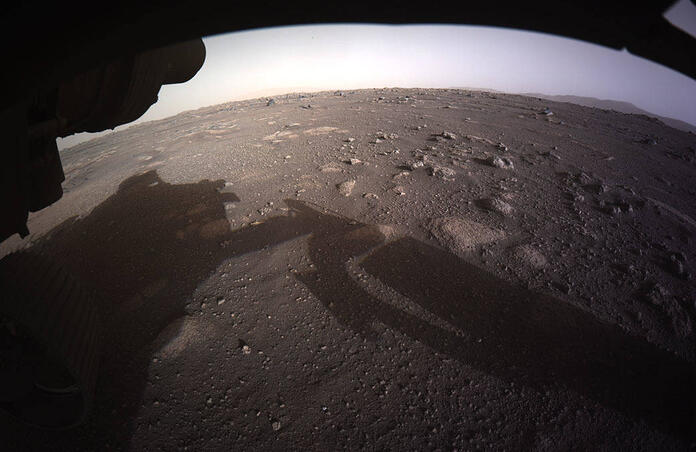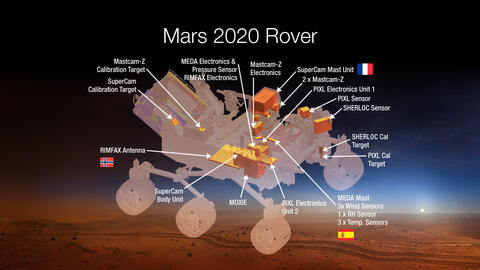Update: The Perseverance Mission

Perseverance's images have been all over the news, here is a summary of the mission!
Middle: Location of the rover (red = bad landing site, blue = favourable landing site) and of the different parts of the lander
Bottom: Zoomed image of Perseverance by the orbiter
In the first article, I explained why landing on Mars is always a tough process; NASA's choice to make this rover reach its target was to associate a parachute with retrorockets and a "sky crane". During the "7 minutes of terror" of the descent, the probe, initially travelling at 20 000 km/h enters the atmosphere, slows down to 1 500 km/h, opens its parachute, slows down to 300 km/h, activates the retrorockets, slows down to 2.5 km/h and finally lands the rover with the sky crane cables - all automatically. The different braking mechanisms need to be correctly deployed, removed and "crashed" away from the rover. Added to the delay in communication with Earth, the manoeuvring is complicated by the fact that the retrorockets whirl up the dust from the Martian surface: the landing site has to be totally assured as last-minute corrections are impossible.
The cover image is the first image taken by the rover itself with the Hazcam instrument. Their main purpose will be to work in conjunction with an in-built software to detect obstacles and avoid accidents. Below, there are more images, taken with unprecedented resolutions, as well as the first sounds from another planet!

As NASA puts it:
" A key objective for Perseverance’s mission on Mars is astrobiology, including the search for signs of ancient microbial life. The rover will characterize the planet’s geology and past climate, pave the way for human exploration of the Red Planet, and be the first mission to collect and cache Martian rock and regolith (broken rock and dust). "
Aside from the cameras, Perseverance notably carries PIXL (Planetary Instrument for X-ray Lithochemistry), an X-ray spectrometer that can identify features as small as a grain of salt on the rocks it images, which means it could identify signs of past microbial life. RIMFAX (Radar Imager for Mars' Subsurface Experiment) uses yet another type of radiation, radar waves, to study the geology below the surface, which could give clues about the presence of water below the surface. Astrobiologists consider water, or at least a liquid medium, to be key for the presence of life, so this tool could hint at the presence of current lifeforms rather than extinct ones like the surface experiments. The MEDA experiment (Mars Environmental Dynamics Analyzer) will monitor the weather and the amount of dust in the atmosphere, key to understand the Martian environment, not least to prepare manned missions. Perseverance can also drill core samples and collect rocks in view of a future mission to retrieve them.
Perseverance transmits up to 2 megabites of data per second, images, sounds and results which will keep coming in over the next Martian year, the expected duration of the mission, and that will have to be analyzed before drawing conclusions about the presence of "Martians".
Image credits: All images and media are courtesy of NASA/JPL-Caltech and the "NASA's Perseverance landing on Mars" graphic is from BBC







